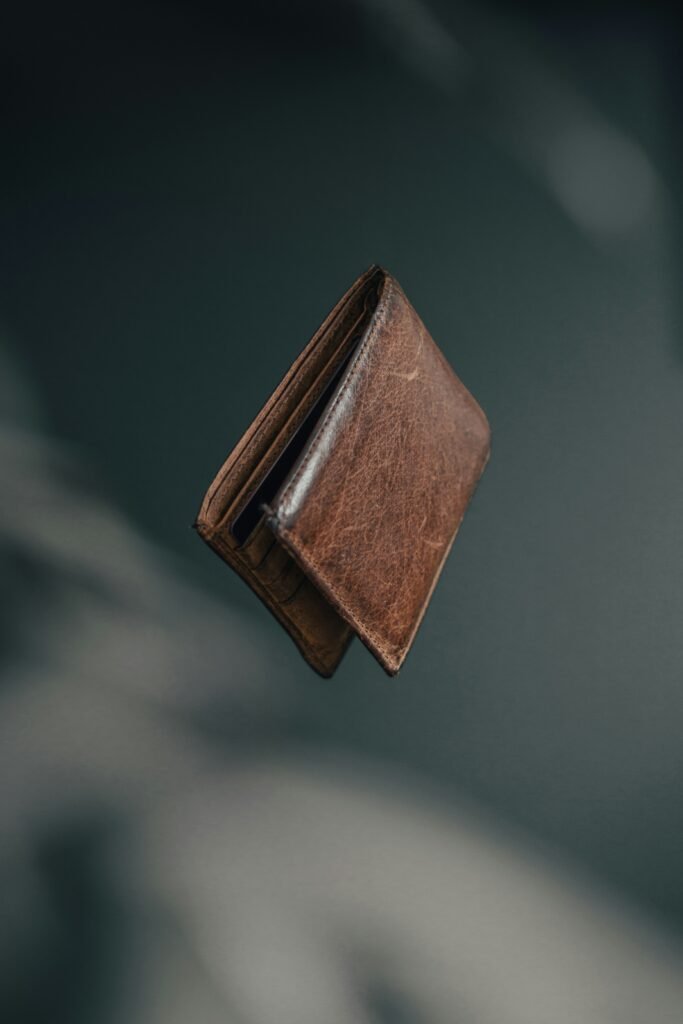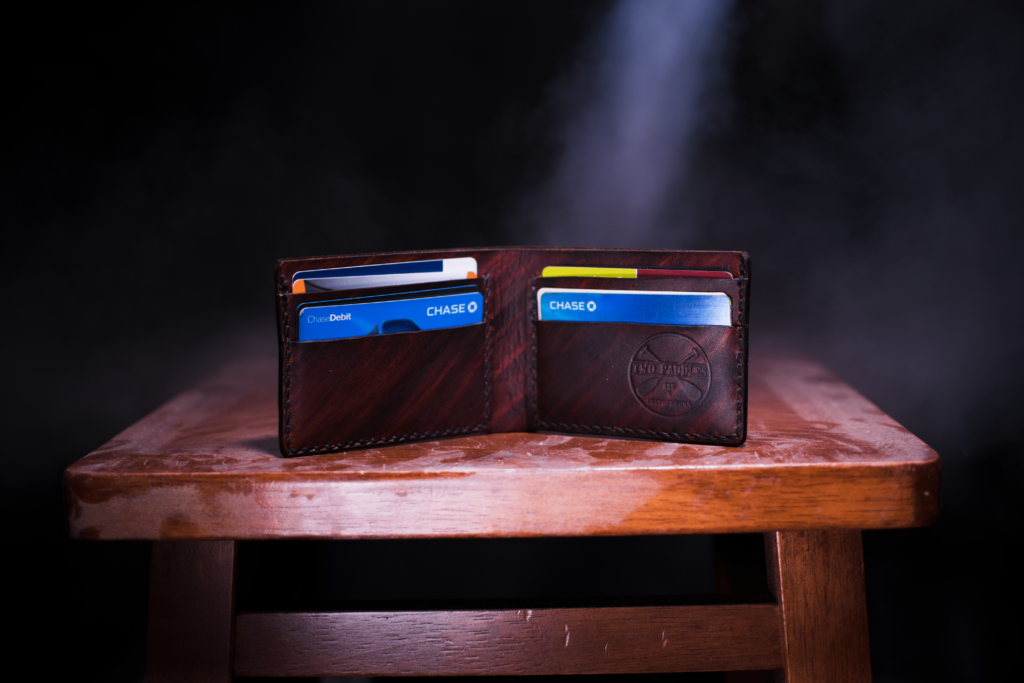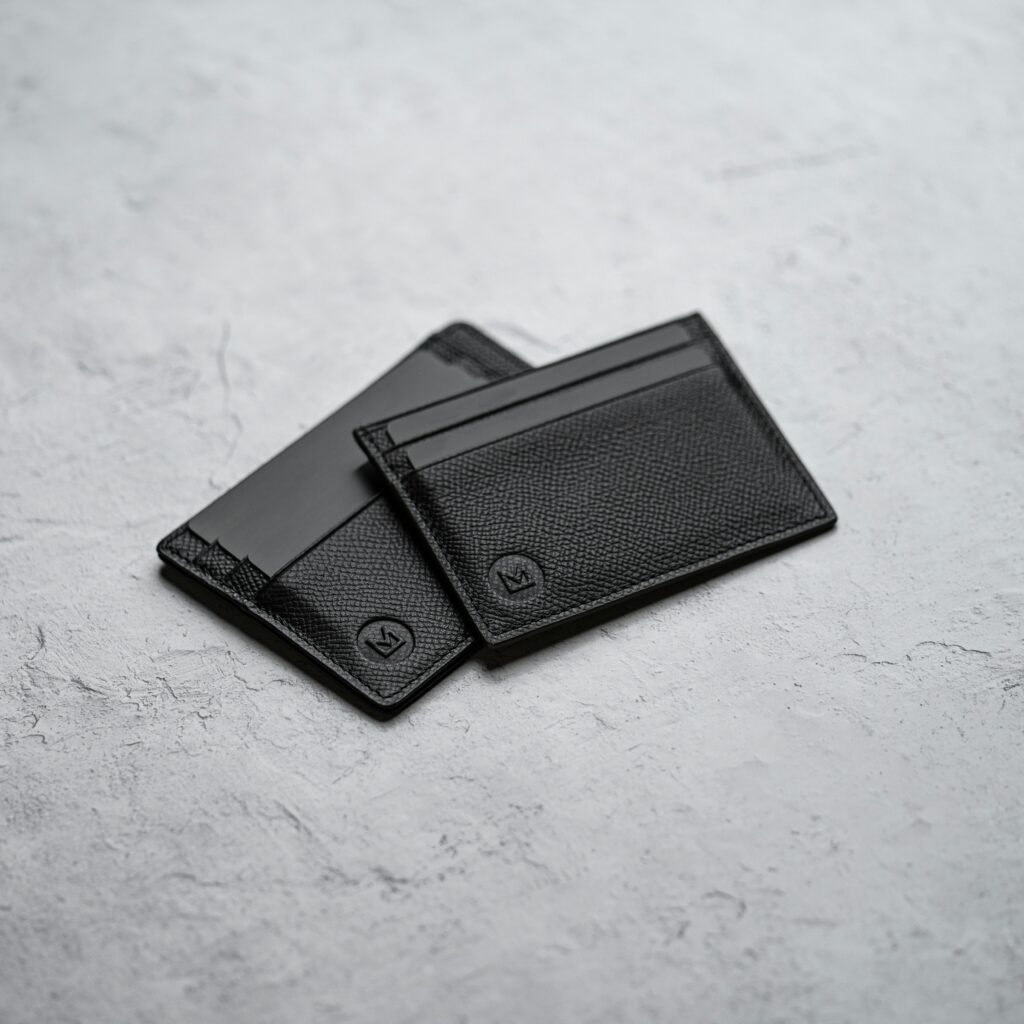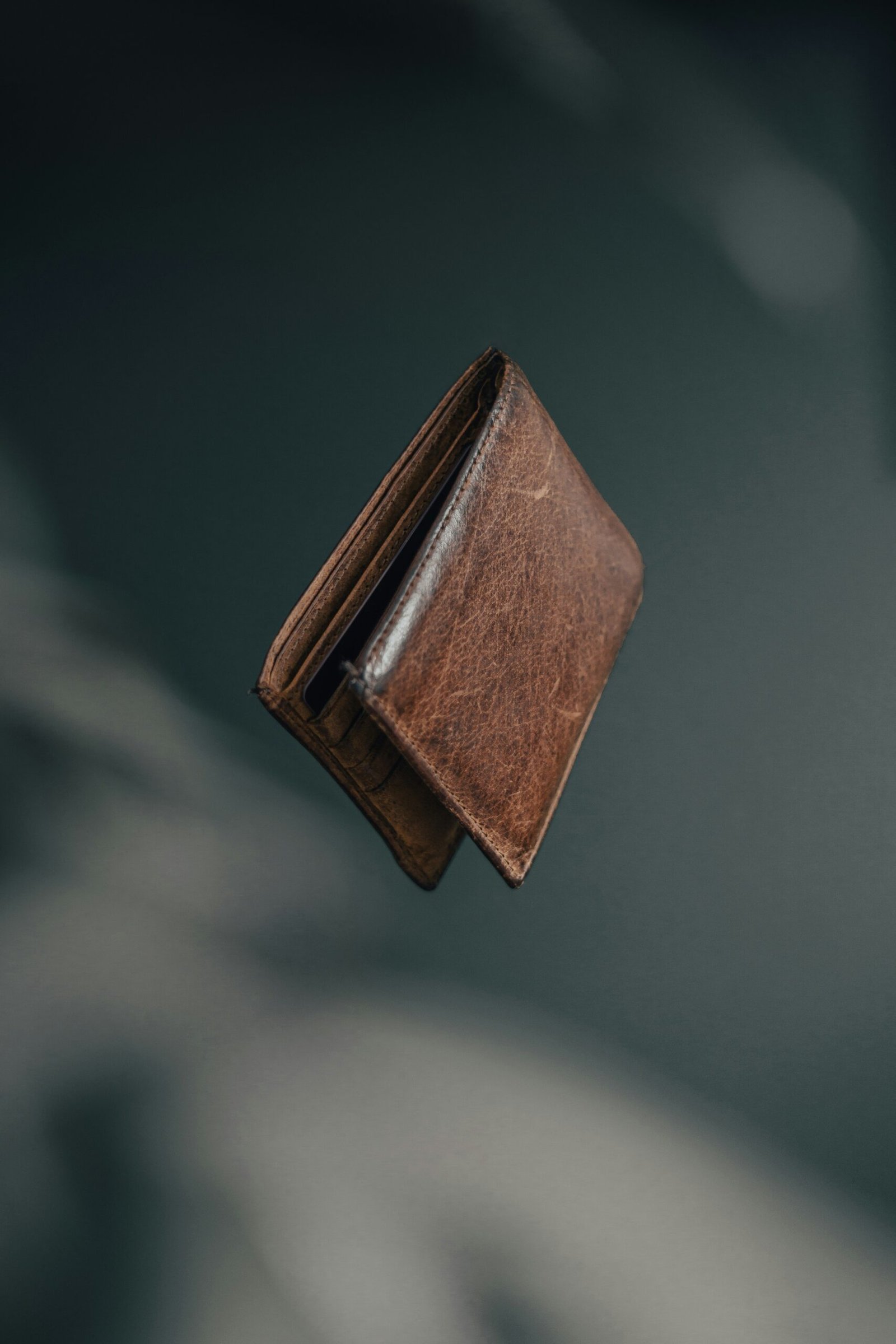In this comprehensive guide, you will discover the essential steps to ensure your leather wallet remains in pristine condition for years to come. From choosing the right cleaning products to implementing effective techniques, you will gain valuable insights and expert tips that will help you maintain the natural beauty and longevity of your beloved accessory. Whether your leather wallet is a timeless investment or a cherished gift, this ultimate guide has got you covered.

This image is property of images.unsplash.com.
Understanding Leather Wallets
Leather wallets are a popular and timeless accessory that not only serve their functional purpose of holding our money and cards but also add a touch of sophistication to our everyday lives. However, in order to make the most out of your leather wallet, it is important to understand the different types available, the advantages of using leather wallets, and the common issues that you may encounter.
Different Types of Leather Wallets
Leather wallets come in various types, each with its own unique characteristics. The most common types include full-grain leather wallets, top-grain leather wallets, split-grain leather wallets, corrected-grain leather wallets, suede and nubuck leather wallets, and exotic leather wallets. Full-grain leather is known for its durability and natural beauty, while top-grain leather offers a balance between durability and a more refined appearance. Split-grain leather is often less expensive and has a more textured surface, while corrected-grain leather has an artificial grain pattern. Suede and nubuck leather wallets have a soft, velvety texture, while exotic leather wallets are made from materials such as snakeskin or alligator skin, adding a touch of luxury.
Advantages of Using Leather Wallets
Leather wallets offer several advantages over wallets made from other materials. Firstly, leather is a durable material that can withstand daily wear and tear, ensuring that your wallet will last for a long time. Additionally, leather has a natural resistance to water and stains, making it easier to clean and maintain. Leather wallets also develop a unique patina over time, giving them a distinctive and personalized appearance. Furthermore, the classic and timeless look of leather never goes out of style, making leather wallets a versatile choice that can complement any outfit or occasion.
Common Issues with Leather Wallets
While leather wallets are known for their durability, they may encounter a few common issues over time. One common issue is the accumulation of dirt and grime on the surface of the wallet, which can make it look dull and less visually appealing. Stains, such as oil-based stains or ink stains, can also be problematic and may require special cleaning techniques. Additionally, water spills or exposure to extreme conditions can cause leather to dry out or develop water stains. It is important to address these issues promptly in order to maintain the overall condition and longevity of your leather wallet.
Preparing for Cleaning
Before embarking on the cleaning process, it is crucial to prepare properly to ensure the best results and avoid any damage to your leather wallet.
Gather Necessary Cleaning Supplies
To clean your leather wallet effectively, you will need a few essential cleaning supplies. These include a soft, lint-free cloth, a suede brush (if applicable), mild soap or leather cleaner, distilled water, a small bowl, and a leather conditioner. It is important to avoid using harsh chemicals or solvents that can damage the leather.
Identify Specific Cleaning Instructions
Different types of leather require different cleaning methods and techniques. Therefore, it is essential to identify any specific cleaning instructions provided by the manufacturer or consult a leather specialist. Some leather wallets may come with specific care instructions to ensure you clean them properly without damaging the leather.
Remove Contents and Inspect the Wallet
Before cleaning your leather wallet, it is advisable to remove all the contents, such as cards, cash, and receipts, as well as any removable inserts or compartments. Take this opportunity to inspect the wallet for any signs of damage, such as loose stitching or scratches, which may require professional repair. Clean the contents separately to remove any dirt or residue.

This image is property of images.unsplash.com.
General Cleaning Steps
Once you have gathered your cleaning supplies and taken the necessary precautions, you can proceed with the general cleaning steps that apply to most types of leather wallets.
Blotting and Removing Surface Dirt
Start by gently blotting the surface of the wallet with a soft, lint-free cloth to remove any loose dirt or dust. Avoid rubbing or scrubbing vigorously as this can damage the leather. Instead, use a light touch and repetitive motions to lift the dirt off the surface.
Creating a Cleaning Solution
To create a mild cleaning solution, mix a small amount of mild soap or leather cleaner with distilled water in a small bowl. Avoid using excessive amounts of soap as this can leave a residue on the leather. It is always best to test the solution on a small, inconspicuous area of the wallet before applying it to the entire surface.
Applying the Cleaning Solution
Dip a clean, soft cloth into the cleaning solution and wring out any excess liquid. Gently wipe the surface of the wallet, using circular motions to lift any dirt or stains. Pay attention to any specific areas that may require extra cleaning, such as corners or edges. Be cautious not to saturate the leather with the cleaning solution, as excessive moisture can damage and warp the leather.
Gently Scrubbing the Wallet
For more stubborn stains or dirt, you can use a soft-bristled brush or a suede brush (if applicable) to gently scrub the affected area. Again, use circular motions and avoid applying too much pressure. This step helps to further lift dirt and stains without causing damage to the leather.
Removing Excess Moisture
After cleaning, use a clean, dry cloth to blot any excess moisture from the surface of the wallet. Make sure to remove as much moisture as possible to prevent the leather from becoming waterlogged. Allow the wallet to air dry naturally in a cool, well-ventilated area away from direct heat or sunlight.
Cleaning Different Types of Leather
Different types of leather require specific care and cleaning techniques to maintain their appearance and integrity. Here are some guidelines for cleaning various types of leather wallets:
Full-grain Leather Wallets
Full-grain leather is known for its natural beauty and durability. To clean a full-grain leather wallet, follow the general cleaning steps mentioned earlier. Avoid using harsh chemicals or excessive amounts of water, as these can damage the leather and alter its appearance. Regular conditioning with a leather conditioner is recommended to keep the leather soft and supple.
Top-grain Leather Wallets
Top-grain leather is a popular choice for its balance of durability and a more refined appearance. Cleaning a top-grain leather wallet follows the same general steps as cleaning full-grain leather. Be sure to test any cleaning products on a small, inconspicuous area before applying them to the entire wallet. Regular conditioning is also recommended to preserve the leather’s quality.
Split-grain Leather Wallets
Split-grain leather has a more textured surface and is often less expensive than full-grain or top-grain leather. Cleaning a split-grain leather wallet requires the same general cleaning steps, with extra care taken to avoid excessive moisture. Split-grain leather may benefit from a suede brush to restore its texture and remove any dirt or stains.
Corrected-grain Leather Wallets
Corrected-grain leather has an artificial grain pattern applied to its surface. Cleaning a corrected-grain leather wallet involves the same general cleaning steps, but it is important to avoid using abrasive materials or excessive scrubbing that may remove or damage the artificial grain. Regular conditioning can help preserve the appearance of corrected-grain leather.
Suede and Nubuck Leather Wallets
Suede and nubuck leather have a soft, velvety texture that requires specific cleaning techniques. To clean a suede or nubuck leather wallet, use a suede brush to gently brush away any surface dirt or stains. For more stubborn stains, you can use a suede eraser or a small amount of white vinegar diluted with distilled water. Avoid using excessive moisture on these types of leather and allow them to air dry naturally.
Exotic Leather Wallets
Exotic leather wallets, such as those made from snakeskin or alligator skin, require special care due to their unique textures and patterns. Cleaning an exotic leather wallet should be done with caution, following the general cleaning steps and any specific care instructions provided by the manufacturer. It is advisable to seek professional assistance or consult a leather specialist for the best cleaning and conditioning methods for exotic leathers.

This image is property of images.unsplash.com.
Addressing Stains and Spills
Unfortunately, stains and spills are inevitable occurrences that may affect your leather wallet. Here are some specific techniques to address different types of stains:
Identifying the Type of Stain
Before treating any stain, it is important to identify the type of stain you are dealing with. Common types of stains include oil-based stains, ink stains, water stains, and stains from food or beverages. Knowing the type of stain will help you choose the appropriate cleaning method.
Treating Oil-Based Stains
Oil-based stains, such as grease or lotion marks, can be tricky to remove from leather. To treat oil-based stains, sprinkle a small amount of talcum powder or cornstarch on the stain and let it sit for a few hours or overnight. Then, gently brush away the powder and blot any residue with a clean cloth. If the stain persists, you may need to seek professional help.
Dealing with Ink Stains
Ink stains can be particularly stubborn and require quick action. To treat ink stains on leather, first, blot the stain gently with a clean cloth to absorb any excess ink. Then, apply a small amount of rubbing alcohol or leather cleaner to a cotton ball or clean cloth. Dab the ink stain gently, being careful not to spread the ink further. Repeat this process until the stain is no longer visible. Always test the alcohol or cleaner on an inconspicuous area first to ensure it does not cause any damage to the leather.
Removing Water Stains
Water stains can leave unsightly marks on leather wallets. To remove water stains, start by gently blotting the area with a clean, dry cloth to absorb any moisture. Allow the wallet to air dry naturally, away from direct heat or sunlight. If the water stain persists, you can use a leather conditioner specifically designed for water stain removal. Follow the instructions on the conditioner to restore the appearance of the leather.
Handling Food and Beverage Spills
Food and beverage spills can leave stains and odors on leather wallets. If the spill is fresh, start by blotting the area with a clean cloth to absorb as much liquid as possible. Avoid rubbing or spreading the spill further. Once the excess liquid has been absorbed, mix a small amount of mild soap or leather cleaner with distilled water to create a cleaning solution. Gently wipe the affected area using circular motions, being careful not to saturate the leather. Blot the area with a clean cloth to remove any moisture, and allow the wallet to air dry naturally. For stubborn stains or odors, seek professional cleaning.
Addressing Mold or Mildew
Mold or mildew can occur if a leather wallet has been exposed to excessive moisture or stored in a damp environment. To address mold or mildew, begin by gently brushing off any visible spores or growths using a soft brush or cloth. Then, mix equal parts of water and rubbing alcohol in a small bowl. Dampen a clean cloth with the mixture and gently wipe the affected area, being careful not to oversaturate the leather. Allow the wallet to air dry naturally in a well-ventilated area. If the mold or mildew persists or spreads, it is recommended to seek professional assistance.
Drying and Conditioning
After cleaning your leather wallet, it is important to dry and condition it properly to prevent any damage and maintain its appearance.
Proper Air Drying Techniques
Once you have removed excess moisture and cleaned the wallet, allow it to air dry naturally. Avoid using direct heat sources, such as heaters or hair dryers, as the intense heat can cause the leather to crack or warp. Instead, place the wallet in a cool, well-ventilated area and allow it to dry slowly. Patience is key to ensure the best results.
Avoiding Direct Heat or Sunlight
Leather is sensitive to extreme temperatures and direct sunlight. Exposure to heat or sunlight can cause the leather to dry out, fade, or crack. It is crucial to avoid placing your leather wallet near radiators, heaters, or windows where direct sunlight can reach it. Opt for a cool, shaded area for both drying and storing your leather wallet.
Utilizing Leather Conditioners
Conditioning plays a vital role in preserving and extending the lifespan of your leather wallet. After the wallet has completely dried, apply a small amount of leather conditioner to a clean, soft cloth. Gently massage the conditioner into the leather using circular motions, ensuring an even application. Pay extra attention to areas that may be prone to dryness or cracking, such as corners or edges. Allow the conditioner to be absorbed by the leather for the recommended time specified by the manufacturer before buffing away any excess with a clean cloth.
Applying Leather Protection Products
In addition to conditioning, you may consider applying a leather protection product to further safeguard your wallet. Leather protection products create a barrier against stains, spills, and other elements that may harm the leather. It is important to choose a trusted and suitable product for your specific type of leather wallet. Follow the instructions provided by the manufacturer for proper application and reapplication intervals.
Preventive Measures
Proper care and maintenance can significantly extend the lifespan of your leather wallet. Here are some preventive measures you can take to keep your wallet in top condition:
Regularly Cleaning and Conditioning
Make it a habit to clean and condition your leather wallet regularly, following the appropriate techniques and guidelines for your specific type of leather. Regular cleaning helps prevent the buildup of dirt and grime, while conditioning keeps the leather soft and supple, reducing the risk of cracking or drying out.
Avoiding Exposure to Extreme Conditions
Leather is sensitive to extreme temperatures, humidity, and moisture. To protect your wallet, avoid exposing it to excessive heat, direct sunlight, or extreme cold temperatures. Additionally, avoid storing your wallet in areas with high humidity or dampness, as this can lead to mold or mildew growth.
Using Protective Covers or Pouches
When not in use, consider storing your leather wallet in a protective cover or pouch. This helps protect it from dust, scratches, and other potential damage. Choose a cover or pouch made from a breathable material, such as cotton, to prevent moisture buildup.
Keeping Wallets Away from Sharp Objects
To prevent scratches or punctures, avoid placing your leather wallet near sharp objects such as keys, pens, or jewelry. Even minor contact with sharp objects can leave permanent marks on the surface of the leather, diminishing its overall appearance.
Preventing Overstuffing of the Wallet
While it may be tempting to carry a lot of items in your wallet, overstuffing it can damage the leather and compromise its structure. Avoid overloading your wallet with unnecessary items, as this can stretch the leather, strain the stitching, and make the wallet bulge or lose its shape. Only carry essential items to maintain the integrity and longevity of your leather wallet.
Professional Cleaning and Restoration
Despite your best efforts, there may come a time when your leather wallet requires professional cleaning or restoration. Here are some considerations when seeking professional help:
Recognizing When to Seek Professional Help
If your leather wallet has deep stains, extensive damage, or you are unsure about the appropriate cleaning methods, it is advisable to seek professional help. Leather specialists have the expertise and resources to diagnose and address specific issues while minimizing any further damage.
Choosing a Reputable Leather Specialist
When selecting a leather specialist, do some research to find a reputable and experienced professional with a track record of working with leather goods. Read reviews, ask for recommendations from trusted sources, or seek referrals from friends and family who have had positive experiences with leather specialists.
Understanding the Restoration Process
Before proceeding with any restoration work, ensure that the leather specialist provides a detailed explanation of the restoration process. This should include an assessment of the wallet’s condition and any necessary repairs or treatments. Ask for an estimated timeline and cost to make an informed decision.
Cost Considerations
Professional cleaning and restoration services for leather wallets can vary in cost depending on the complexity of the work required, the wallet’s condition, and the reputation of the specialist. Be prepared to discuss your budget with the specialist and inquire about any warranties or guarantees provided for the work performed.
Common Mistakes to Avoid
When cleaning and caring for your leather wallet, it is important to avoid certain common mistakes that can potentially damage the leather. Here are some pitfalls to avoid:
Using Harsh Cleaning Chemicals
Avoid using harsh cleaning chemicals or solvents on your leather wallet as they can strip away the natural oils and protective coatings, leading to dryness, cracking, and discoloration. Stick to mild soap, leather cleaner, and specific leather care products to ensure the leather’s integrity.
Aggressive Scrubbing or Rubbing
Leather, especially certain types such as suede or nubuck, is delicate and can easily be damaged by aggressive scrubbing or rubbing. Apply gentle pressure and use circular motions when cleaning to avoid causing unnecessary wear or removing the leather’s natural texture.
Skipping the Conditioning Step
Conditioning is a crucial step in maintaining the suppleness and durability of your leather wallet. Skipping this step can lead to dryness, cracking, and premature aging of the leather. Make sure to incorporate regular conditioning into your leather care routine.
Using Excessive Amounts of Water
Excessive moisture can cause damage to leather, leading to warping, shrinking, or stretching. Avoid using excessive amounts of water when cleaning your leather wallet, and always blot dry any excess moisture before allowing it to air dry naturally.
Neglecting Regular Cleaning
Regular cleaning is essential to prevent the buildup of dirt, grime, and stains on your leather wallet. Neglecting to clean your wallet regularly can lead to the deterioration of the leather’s quality and appearance over time. Incorporate cleaning as part of your routine maintenance to ensure the longevity of your leather wallet.
Conclusion
Properly cleaning and maintaining your leather wallet is essential to preserve its appearance, durability, and lifespan. By understanding the different types of leather wallets, the advantages they offer, and the common issues you may encounter, you can take the necessary steps to keep your wallet in top condition. From gathering the necessary cleaning supplies and identifying specific cleaning instructions to properly addressing stains and spills and implementing preventive measures, following the appropriate cleaning techniques ensures that your leather wallet remains a cherished accessory for years to come. Remember to consult a leather specialist for professional help when needed and avoid common mistakes that can potentially damage your wallet. With proper care and cleaning, your leather wallet will continue to exude timeless elegance and serve as a reliable companion in style and functionality.
